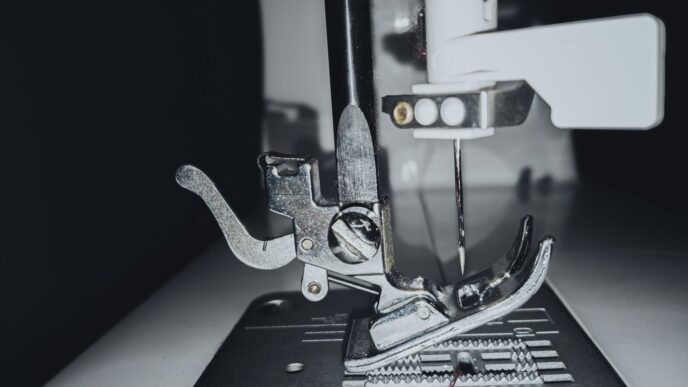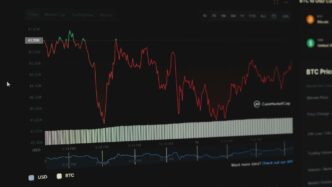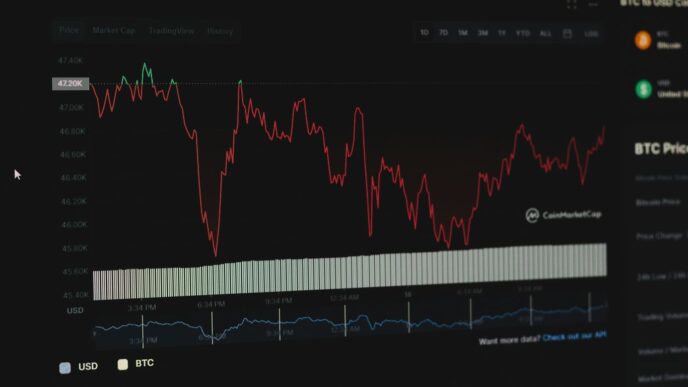Every year, MIT Technology Review puts out a list of people under 35 who are doing really cool stuff with technology. It’s called the 35 Innovators Under 35, and it’s a big deal. These are the folks who are not just thinking up new ideas, but actually making them happen and changing the world. This year’s group, the 2025 MIT Innovators Under 35, is no different. They’re tackling everything from health and AI to how we deal with climate change.
Key Takeaways
- The annual MIT Innovators Under 35 list highlights 35 individuals under the age of 35 who are making significant contributions to science and technology.
- These innovators are recognized for turning big ideas into practical solutions that address global challenges.
- The selection process is thorough, involving expert judges and editors to identify the most impactful young minds.
- Past honorees include well-known figures like Mark Zuckerberg and the founders of Google, showing the list’s track record of identifying future leaders.
- The 2025 honorees are making strides in fields such as biotechnology, AI, clean energy, and advanced materials.
Recognizing Visionaries: The MIT Innovators Under 35

A Legacy of Identifying Future Leaders
For more than two decades, MIT Technology Review has been spotlighting young minds with its annual "Innovators Under 35" list. It’s not just about recognizing bright ideas; it’s about spotting the people who are actually going to make those ideas happen and change the world. Think of it as a peek into the future of science and technology, showing us who’s going to be tackling the big problems. This list has a pretty solid track record, having featured folks who later became household names in tech and science. It’s a tradition that keeps on giving, year after year.
The Rigorous Selection Process for MIT Innovators Under 35
Getting on this list isn’t a walk in the park. It starts with a flood of applications and nominations, which are then carefully sorted through. After that, a panel of expert judges, people who really know their stuff in fields like materials science and computer science, get to work. They pore over the semifinalists, scoring their work and potential. Finally, the editors step in, using their own deep knowledge of areas like AI and biotech to make the final picks. They’re looking for that spark, that real potential to shake things up. It’s a multi-step process designed to find the most impactful innovators out there.
Transforming Big Ideas into Real-World Solutions
What really sets these innovators apart is their ability to take something that sounds like science fiction and turn it into something tangible. They aren’t just dreaming up new concepts; they’re building them. Whether it’s developing faster ways to sequence DNA, creating AI that can learn while you’re not looking, or finding cleaner ways to make chemicals, these individuals are making a difference. Their work shows how bold imagination can turn into technology that genuinely improves lives. It’s about solving problems, big and small, and pushing the boundaries of what we thought was possible.
Pioneering Advancements Across Diverse Fields
This year’s MIT Innovators Under 35 are really pushing the boundaries in a bunch of different areas. It’s not just one or two hot topics; they’re making waves everywhere from how we treat diseases to how we power our planet.
Innovations in Biotechnology and Health
In the world of health, the focus is on making things faster and more precise. Think about DNA sequencing – it used to take ages, but now we’ve got systems that can do it in a fraction of the time. This speed is a game-changer, especially in emergency situations where knowing a patient’s genetic makeup can mean the difference between life and death. We’re seeing this technology being used in children’s hospitals already, which is pretty incredible.
Beyond just speed, there’s a lot of work going into new ways to tackle health problems. This includes developing novel treatments and diagnostic tools that are more targeted and less invasive. The goal is to improve patient outcomes and make healthcare more accessible.
Cutting-Edge Computing and Artificial Intelligence
Artificial intelligence is, of course, a huge part of this. But it’s not just about making AI smarter; it’s about making it work for us in new ways. Some innovators are figuring out how to get AI to do complex tasks while we’re not even around, like working overnight on research projects. Others are trying to understand the inner workings of large language models, aiming to make them more reliable and prevent those weird, nonsensical outputs they sometimes produce.
Here’s a quick look at some AI-related advancements:
- AI for Scientific Discovery: Using AI to sift through massive datasets and find patterns that humans might miss, speeding up research in fields like medicine and materials science.
- AI Explainability: Developing methods to understand why an AI makes a certain decision, which is key for trust and safety, especially in critical applications.
- Efficient AI Training: Creating ways to train AI models with less data and computational power, making advanced AI more accessible.
Sustainable Solutions in Clean Energy and Climate
Climate change is a big one, and many innovators are tackling it head-on. One really interesting approach involves using natural resources, like rocks, to create chemicals in a way that’s much better for the environment. This kind of thinking is what we need to move away from traditional, polluting industrial processes.
We’re also seeing work in:
- Carbon Capture and Utilization: Developing technologies to capture carbon dioxide from the atmosphere and turn it into useful products.
- Renewable Energy Storage: Creating better and cheaper ways to store energy from sources like solar and wind, so it’s available even when the sun isn’t shining or the wind isn’t blowing.
- Climate-Friendly Materials: Designing new materials that have a lower environmental impact throughout their lifecycle, from production to disposal.
Spotlight on the 2025 Innovators Under 35

Sneha Goenka: The 2025 Innovator of the Year
This year, MIT Technology Review is shining a special light on Sneha Goenka, who has been named the 2025 Innovator of the Year. She’s an Assistant Professor at Princeton University, working in Electrical and Computer Engineering. Goenka’s work is pretty amazing – she developed a system for sequencing human DNA that’s the fastest in the world. Seriously, it’s so fast it even set a Guinness World Record. This isn’t just a cool tech achievement; it’s already making a real difference. Her system has helped speed up diagnoses in critical care situations at Stanford’s children’s hospital, which can be a total game-changer when every second counts.
Groundbreaking Work in DNA Sequencing
Goenka’s DNA sequencing pipeline is a big deal. Before her work, getting a full human genome sequence could take a really long time. Now, her method cuts that down dramatically. Think about what that means for people with rare genetic diseases or for quickly identifying infectious agents. It’s about getting answers faster, which can lead to quicker treatment and better outcomes. It really shows how advanced computing can directly impact health.
AI Advancements and Climate-Friendly Chemistry
But Goenka isn’t the only one making waves. The 2025 list is packed with brilliant young minds. We’ve got folks like Yichao "Peak" Ji, who is figuring out how to make AI work more efficiently, almost like teaching it to work while you’re not actively supervising it. Then there’s Iwnetim Abate, whose company is using rocks and underground processes to create chemicals in a way that’s much better for the climate. It’s a neat idea that could really cut down on industrial pollution. These innovators are tackling some pretty tough problems, from making AI smarter to finding greener ways to produce everyday materials.
The Impact of MIT Innovators Under 35
Shaping Industries and Accelerating Progress
This list isn’t just about recognizing bright minds; it’s about seeing how their work actually changes things. For over two decades, MIT Technology Review has been spotting these young folks, and looking back, it’s pretty wild to see where some of them ended up. Think about it: people who were on this list years ago are now running major companies or leading research that affects us all. It’s like they got a head start, and their ideas just kept growing.
Inspiring Future Generations of Scientists
Seeing someone your age, or not much older, come up with something that could fix a big problem? That’s a huge motivator. It shows that you don’t have to wait until you’re old and established to make a real difference. These innovators are proof that fresh perspectives and a lot of hard work can really move the needle. It makes younger students and researchers think, "Hey, maybe I can do that too." It’s a ripple effect, really. One person’s breakthrough can spark a whole new wave of ideas.
Notable Successes of Past Honorees
It’s always interesting to look at who was on the list in previous years. You’ll find names that have become household words in tech and science. For instance, folks who went on to co-found companies like Google or iRobot, or even lead design at Apple, were once part of this group. It’s a testament to the program’s ability to spot potential early on.
Here are just a few examples of how past honorees have shaped the world:
- Google Founders: Larry Page and Sergey Brin, who revolutionized internet search.
- Apple’s Chief Designer: Jonathan Ive, whose work defined the look and feel of many Apple products.
- Robotics Pioneer: Helen Greiner, a co-founder of iRobot, bringing robots into homes and businesses.
- AI Leader: Andrew Ng, who has been instrumental in advancing machine learning and AI education.
These individuals, and many others, show the long-term impact of identifying and supporting young innovators. Their journeys from honorees to industry leaders highlight the significance of this recognition.
Exploring the Frontiers of Technology
Revolutionizing Robotics and Manufacturing
It’s pretty wild to think about how much robots are changing the way things get made. We’re not just talking about those big, clunky arms on assembly lines anymore. The new wave of robotics is all about precision, adaptability, and working alongside people. Think about micro-robots that can perform delicate surgeries or swarm robots that can build complex structures. These aren’t science fiction; they’re becoming reality thanks to the bright minds recognized by MIT Technology Review. The goal is to make manufacturing faster, safer, and way more efficient. It’s a big shift from the old ways of doing things.
Developing Next-Generation Materials
Materials science is another area where things are really heating up. We’re seeing the creation of substances with properties we could only dream of a few years ago. Imagine materials that can repair themselves, conduct electricity with zero resistance, or even change their shape on command. These aren’t just cool party tricks; they have huge implications for everything from aerospace to consumer electronics. The development of these advanced materials is key to enabling many other technological breakthroughs. It’s like building a better foundation for all sorts of future inventions.
Advancing Scientific Discovery Through Innovation
At its core, innovation is about pushing the boundaries of what we know and what we can do. The individuals highlighted in the MIT Innovators Under 35 list are doing just that. They’re not just improving existing technologies; they’re creating entirely new fields of study and application. This relentless pursuit of the unknown is what drives progress. It’s about asking
Looking Ahead
So, that’s a look at some of the bright minds MIT is spotlighting this year. It’s pretty cool to see what these young folks are coming up with, tackling everything from health to the environment. They’re not just dreaming up ideas; they’re actually building things that could change how we live. It makes you wonder what they’ll do next, and honestly, it’s exciting to think about the future they’re helping to create. Keep an eye on these names – they’re definitely going places.
Frequently Asked Questions
What is the MIT Innovators Under 35 list?
The MIT Innovators Under 35 list is an annual award given by MIT Technology Review. It highlights 35 young people under the age of 35 who are making big changes in science, technology, and engineering. These winners are chosen because their ideas and inventions are helping to solve tough problems and shape the future.
How are the winners of Innovators Under 35 chosen?
First, people can apply or be nominated for the list. Then, experts in different fields, like computer science and biology, review all the entries. After that, the editors at MIT Technology Review pick the final 35 based on how much impact their work could have on the world.
Who was named the 2025 Innovator of the Year?
Sneha Goenka was chosen as the 2025 Innovator of the Year. She is a professor at Princeton University and made the world’s fastest system for reading human DNA, which helps doctors get important results much quicker.
What kinds of projects do the honorees work on?
The winners work on many different projects. Some are making new medicines and health tools, others are building smarter computers and robots, and some are inventing ways to make clean energy. Their work covers everything from helping the environment to making life better for people everywhere.
Why is being on the Innovators Under 35 list important?
Being on this list is a big honor. It helps young inventors get noticed by leaders in science and business. Many past winners have gone on to start famous companies or make discoveries that changed the world.
Where can I read more about the 2025 Innovators Under 35?
You can learn more about this year’s winners and their stories by visiting the MIT Technology Review website at www.technologyreview.com/tr352025.














